The Regional Divide in JAMMU & KASHMIR: Let’s understand with the FACTS & ELECRORAL DATA of 2008
| 30-Aug-2019 |
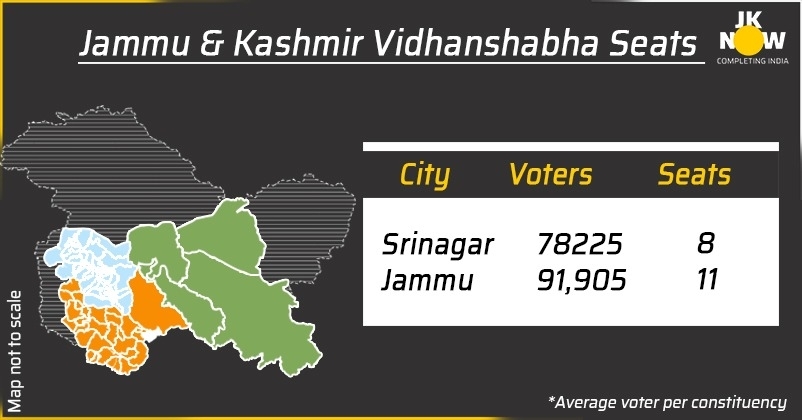
In the year 2008, a total of 65, 37,821voters are eligible to exercise their franchise during the Assembly elections in the State of Jammu and Kashmir. These include 33, 85,147 male and female and 31,52,441 female voters.
Together, these voters will elect legislators or MLAs for the Legislative Assembly (the Lower House). Of these 87 legislators, Ladakh region will elect only four. On the other hand, the Kashmir region will get to elect 46 legislators and the Jammu region 37.
At the outset, it must be made clear that the comparative figures for the Ladakh region, both Kargil and Leh districts, are being deliberately left out for reasons outlined below. It must be borne in mind that uner-representation in the political sphere is not an issue of concern to Ladakh as it is for the Jammu. The people of Ladakh may have their own grievances Vis a Vis the Kashmiri leadership as also the Central Government. But equitable, adequate and proportionate representation is not one of them.
The reasons for leaving out the electoral data pertaining to Ladakh will also be touched elsewhere.
The total number of voters in the Assembly elections in the year 2008, regionwise ,is 30,84,417 for the Jammu region, and these voters will elect 37 MLAs at 83,263 apiece while the number of voters in the Kashmir region is 32,60,668where the people will get to elect 46 MLAs at 70,884 a piece.
Trying to make sense of this difference of 83,363-70,884 = 12,478 voters, per MLA, for the two regions, during the 2008 Assembly elections, is the purpose of this book. We don’t have clear answers, officially or unofficially yet but the issue is worth examining.
Why is it that the number of voters per constituency is higher in Jammu than in Kashmir?
Why it is that Jammu has 37 MLAs and the Kashmir valley 46?
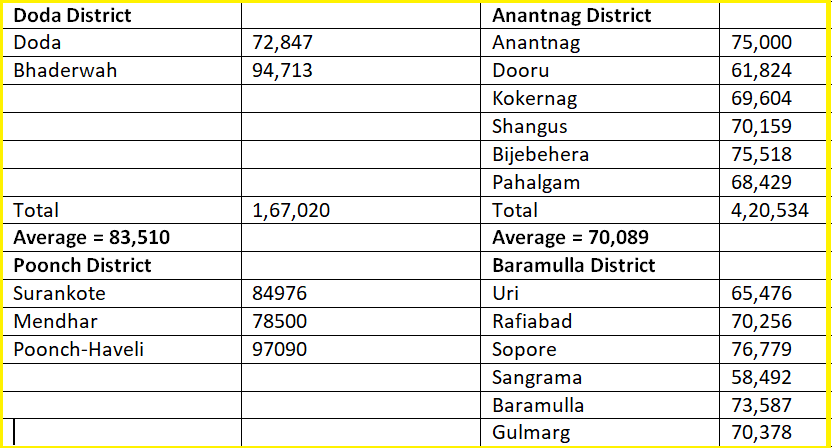
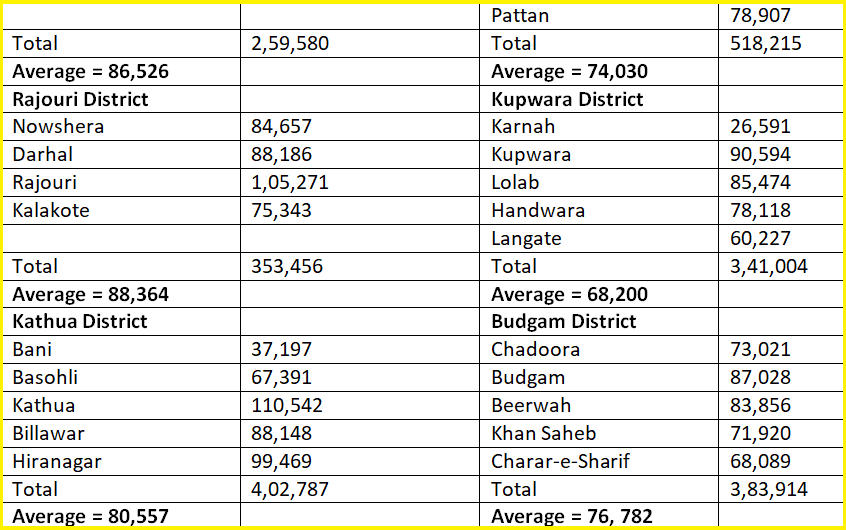
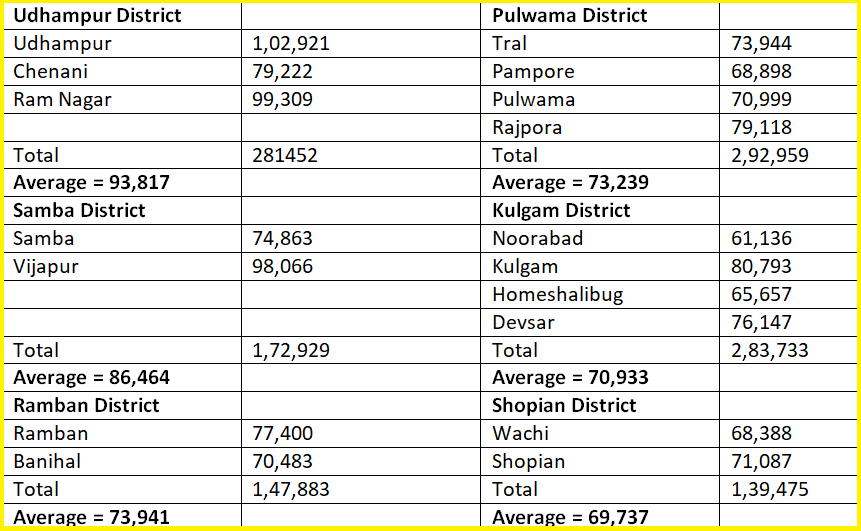
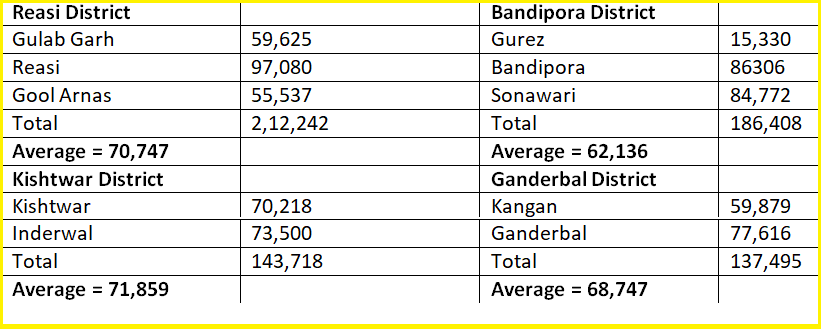
Why does the Jammu region thus have 46-37= 9 fewer MLAs as compared to the Kashmir region?
What is the reason for Jammu having larger constituencies (voterwise), consistently, district after district, as compared to the Kashmir valley constituencies?
Is the Kashmir valley geographically bigger, than Jammu? No, it is not. The Jammu region covers an area of a little over 26,293 square kilometers while the Kashmir valley is only 15,.948 square kilometers.
This means that on an average, the constituencies in Jammu, areawise, also are bigger than the constituencies in Kashmir. In fact, when we calculate the average constituency sizes, for the Jammu and Kashmir region, respectively, we find that the average constituency size in Jammu is more than double as compared to the constituencies in Kashmir.
Area wise, the size of the 46 constituencies in Kashmir is a little less than 348 square kilometer per constituency (divide the entire area of Kashmir with the number of constituencies) while as in the Jammu region (divide area by number of constituencies), the average size of the 37 constituencies works out to almost 710 square kilometers per constituency.
Why is it that the constituencies in Jammu are bigger, as compared to the Kashmir constituencies, both in terms of number of voters per constituency as also in size (more than twice in area)?
Is a pattern discernible in all the statistical data pertaining to successive Assembly elections in J&K? Is it for the first time that the constituencies in the Jammu region are bigger, both in terms of number of voters as also in size, in 2008? Or was it that this pattern was visible even in earlier elections?
Is this difference (which seems unreasonable and unfair to Jammu) the reason for the Jammu leaders to allege discrimination?
Is the perception of having been wronged in the hands of their Kashmiri brethren rooted in these facts?
Can it be termed a disparity?
Or is it just an aberration that has creeped in over the years and can be corrected?
Is there a need to correct it? If so, how can it be set right?